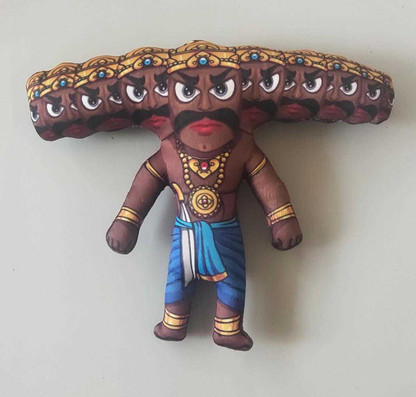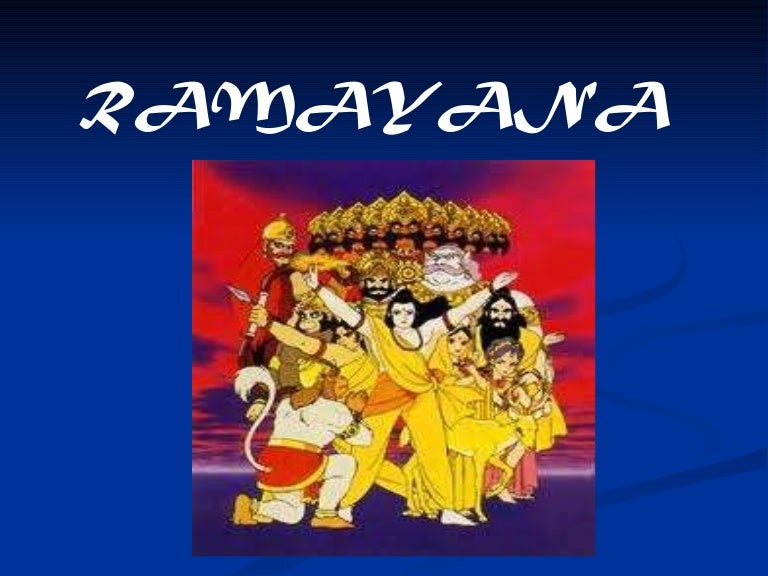
Finally, Hanuman is shown at the top of the image carrying the mountain top with the magical remedy that will, or perhaps already has, brought Lakshmana back to life. Thus, the crown reminds the viewer of the gravity of Ravana's non- dharmic actions. In short, with great power comes great responsibility. By highlighting the high social station of these characters, viewers are also reminded of the high responsibilities and heavy burdens that these characters carry if they are to behave according to dharma: when a leader behaves in a non- dharmic way, the consequence of his actions has a greater affect upon society. Rama, Lakshmana, and Ravana are all shown wearing crowns, reminding the viewer that they are all royalty. Both Ravana's supernatural strength and power, as well as his demonic nature, are exhibited in these physical traits. Ravana, their enemy confronts them in his undisguised form, with his multiple heads and arms flailing. Rama is visually linked to his divine nature in the blue color of his skin, an attribute that links him with the sky and the heavens. Both offer attractive countenances with evenly proportioned bodies and no physical deformities. Rama and Lakshmana are paired in their similar appearance and stance. But how does this image go about telling the viewer that one side is good and the other side is not? The moment of action in the story can be identified as the final battle scene between the forces of good (Rama, Lakshmana and Hanuman), and those of evil, or of un-dharmic behavior, in the form of Ravana.

#Ramayana character download
#Ramayana character series
The television series was so popular that the country came to a virtual stop as nearly everyone who could gain access to a television stopped what they were doing to watch the televised adventures of Rama. For example, Indian national television filmed a 78 part production of the Ramayana that was shown on Sunday mornings in 19.
/khon-art-culture-thailand-dancing-in-masked-khon-tos-sa-kan-and-hanuman-in-literature-ramayana-thailand-673432746-59efa5a90d327a001047f45b.jpg)
The Ramayana's popularity has not waned over the centuries. The faces of Rama, Sita, and Hanuman appear in the every day life of many Indians, and the story has crossed over into media that was not even imagined at the time when the story was composed, such as modern movies, comic books and mass-produced calendars. The story can also be found depicted in the plastic arts, and in painting in particular, and continues to be visually recreated to the present day. For example, components of the story are regularly performed in song, theater productions, and dance performances. With the important role that the Ramayana plays in Indian society, and particularly as a teaching tool for dharma and other Hindu concepts, it should not be surprising to discover that the story has also found its way into numerous other media as well.

Over the centuries it has also been written down in numerous languages, creating thousands of different (but related) texts.

Initially it was passed on orally as an epic poem that was sung to audiences by a bard, as it continues to be today. The story of the Ramayana has been passed from generation to generation by numerous methods and media.


 0 kommentar(er)
0 kommentar(er)
